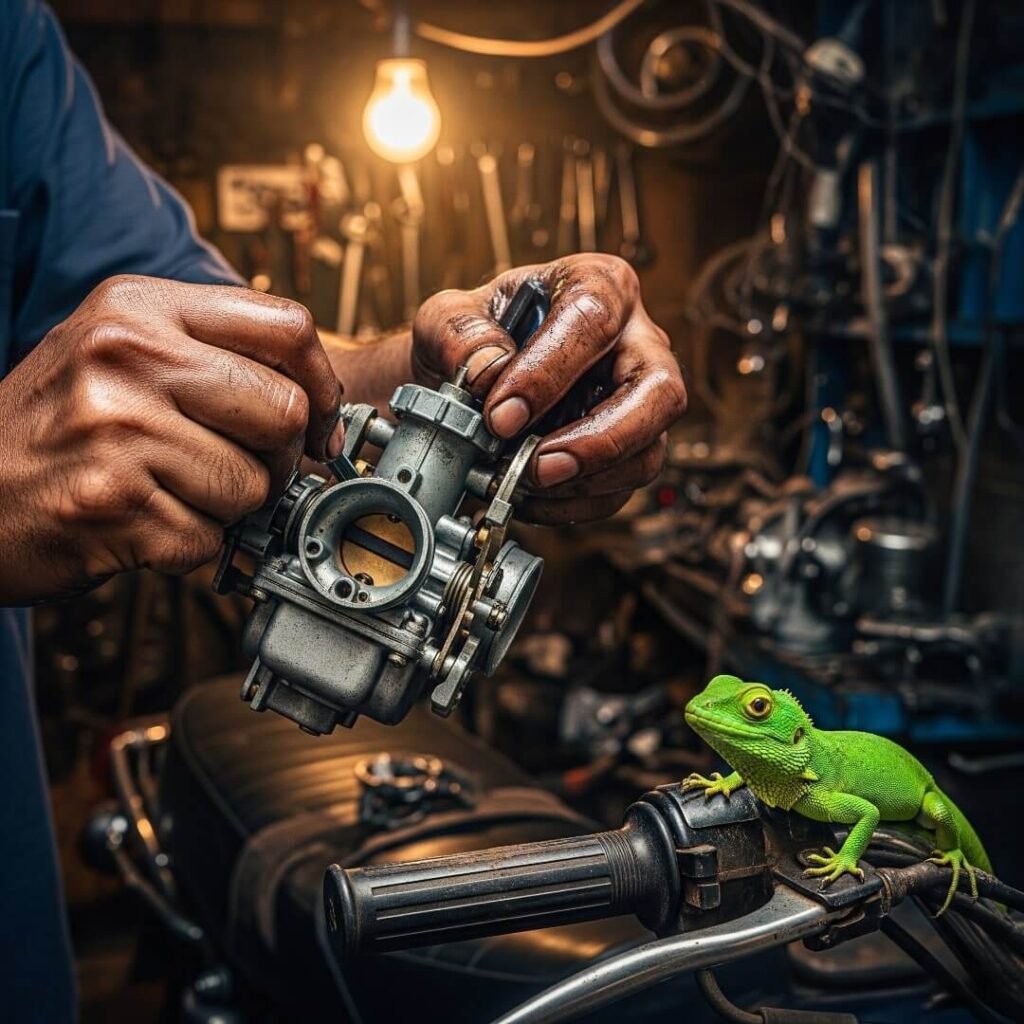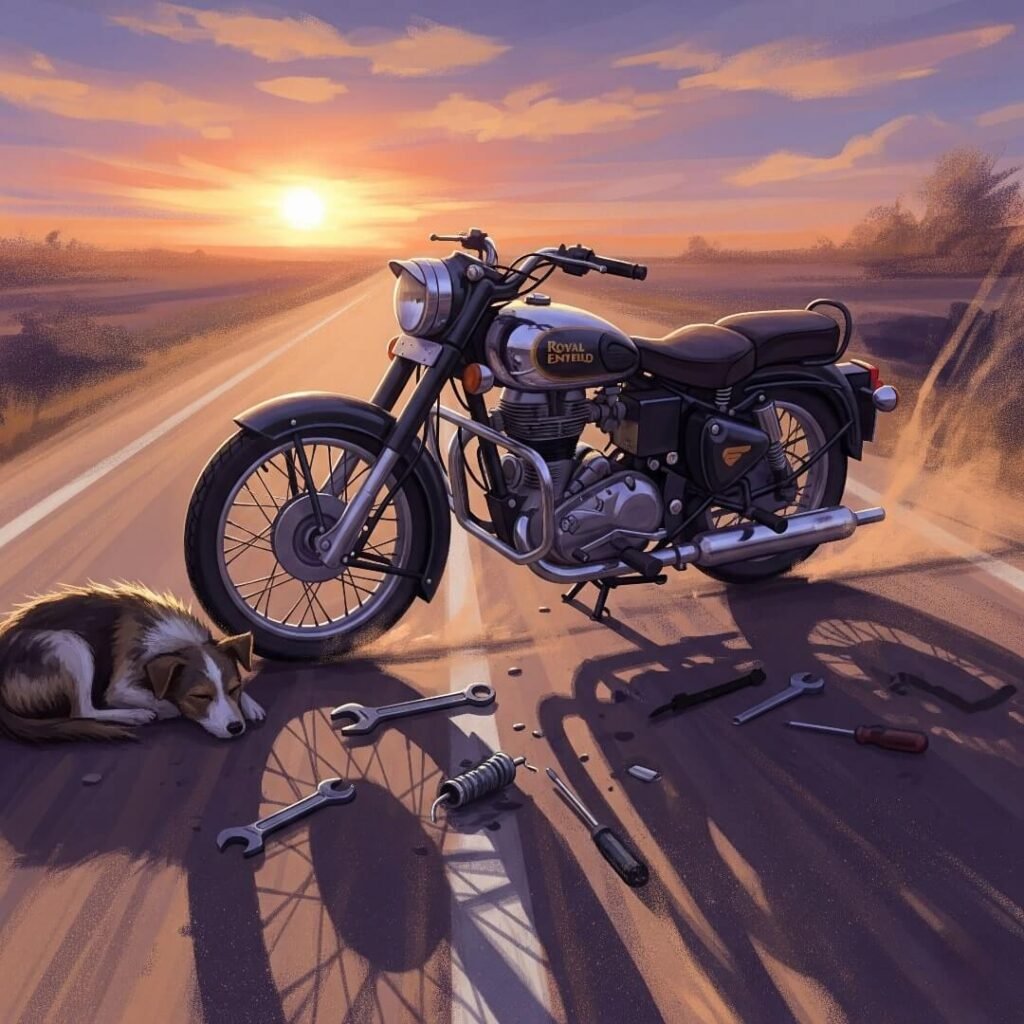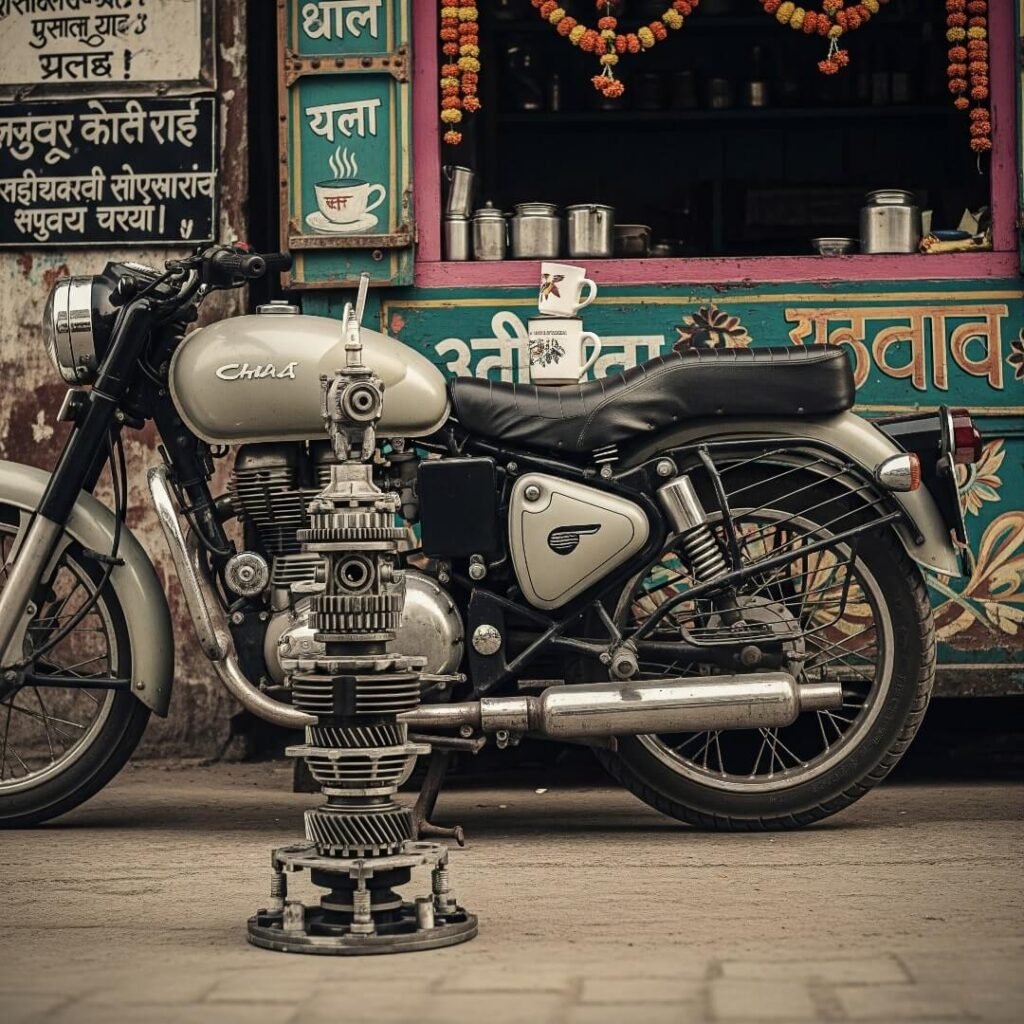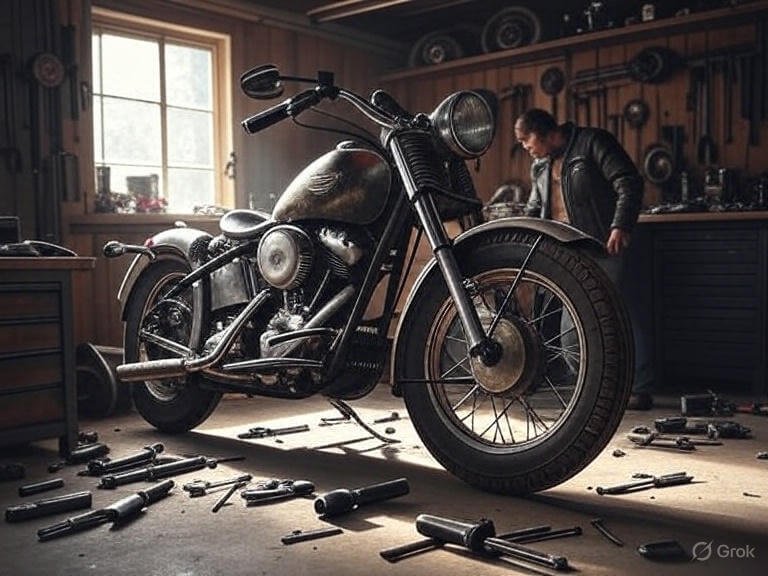Motorcycle engine troubleshooting is my current obsession, crouched here in a dusty garage in Jodhpur, India, with oil smudged on my face and the smell of petrol making my head spin. I’m just an American dude, not some grease-monkey guru, and keeping my bike alive on these wild roads feels like wrestling a tiger. The air’s thick, like breathing soup, and there’s this constant buzz of horns and scooters outside. I’ve learned motorcycle repair the hard way—think sweaty, swearing, and a few dumb mistakes. Here’s my raw, messy guide to keeping your bike running, straight from India’s chaos, with all my screw-ups and half-baked wins.
Back home in the States, I thought I was hot stuff with bikes. Then India hit me with roads like moonscapes and dust that creeps into every damn nook. My first breakdown? Total disaster. Picture me, red-faced, stranded on a desert highway, bike coughing like it smoked a pack a day. I learned fast that motorcycle engine troubleshooting is about listening—your bike’s got a voice, and it’s usually yelling at you.
Why Motorcycle Engine Troubleshooting is My Lifeline
Keeping your bike purring isn’t just about looking badass (though, c’mon, it’s a vibe). Motorcycle engine troubleshooting means you’re not stuck in the middle of nowhere, praying for a mechanic who doesn’t overcharge. Here in India, where shops can be sketchy, figuring out engine issues yourself is like finding water in the desert. I learned this when my bike died in a monsoon, water dripping from my helmet, and I realized the carburetor was drowned. Fun times. It’s saved me cash and pride, even if I’ve looked like an idiot more than once.

Motorcycle Engine Issues I’ve Botched (and Fixed)
Engines are drama queens, let me tell you. I’ve run into so many motorcycle engine troubleshooting headaches here, I could write a book. Like, one time my bike wouldn’t start, and I legit thought it was cursed. Spoiler: just a clogged fuel line. Here’s the stuff I’ve dealt with:
- Spark Plugs Giving Up: My bike was sputtering like it was auditioning for a horror flick. Swapped the plug, and it roared. CycleWorks has solid plugs—saved my ass.
- Air Filters Choked with Dust: India’s dust is relentless. A clogged filter had my engine gasping worse than me after spicy biryani. Clean it often, or you’re screwed.
- Fuel System Nightmares: Bad gas or a gummed-up carburetor can kill your vibe. Happened to me in a crowded market, tuk-tuks honking like I was in their way. RevZilla has dope carb-cleaning guides.
My (Kinda Shaky) Motorcycle Engine Troubleshooting Tips
Alright, here’s my hard-earned advice for motorcycle repair, born from sweat, tears, and a few choice curse words. I’m no pro, but these work—mostly. Grab a chai and listen up:
- Ear on, Ego off: Your bike’s noises—rattles, wheezes, whatever—are clues. I ignored a weird clunk once, and my piston paid the price. Don’t be dumb like me.
- Start Simple, Duh: Check spark plugs, air filter, fuel lines first. I spent hours on a “major” issue that was just a loose battery cable. Ugh.
- Toolkit’s Your BFF: I carry a multi-tool, some wrenches, and a spare plug. Saved me when my bike crapped out by a chai stall. BikeMaster makes kits that don’t take up space.
- Maintenance Ain’t Optional: Oil changes, chain lube, tire checks—do it. My chain snapped on a hill once. Not my finest hour.

My Motorcycle Repair Screw-Ups (Learn from Me)
I’ve flubbed plenty in motorcycle engine troubleshooting. Like, I once over-tightened a bolt and cracked my oil pan—oil everywhere, me cursing in front of a curious cow. Or the time I “guessed” the fuel mix and made my bike sound like a dying vacuum cleaner. Biggest lesson? Slow down. Don’t fix stuff when you’re hyped on chai or pissed off. Check twice, tighten once. Oh, and maybe don’t drop your wrench in a puddle. Yeah, I did that.
Wrapping Up My Motorcycle Engine Troubleshooting Rant
Motorcycle engine troubleshooting ain’t pretty, but man, it’s satisfying when your bike roars back to life. I’m still learning, still screwing up, but every breakdown’s a story. India’s taught me to laugh at my mistakes—grease on my shirt, lizards watching me fail, the works. If you’re out there fixing your ride, get dirty, listen close, and don’t sweat the small stuff. Got a bike repair story? Spill it in the comments—I’m all ears.






